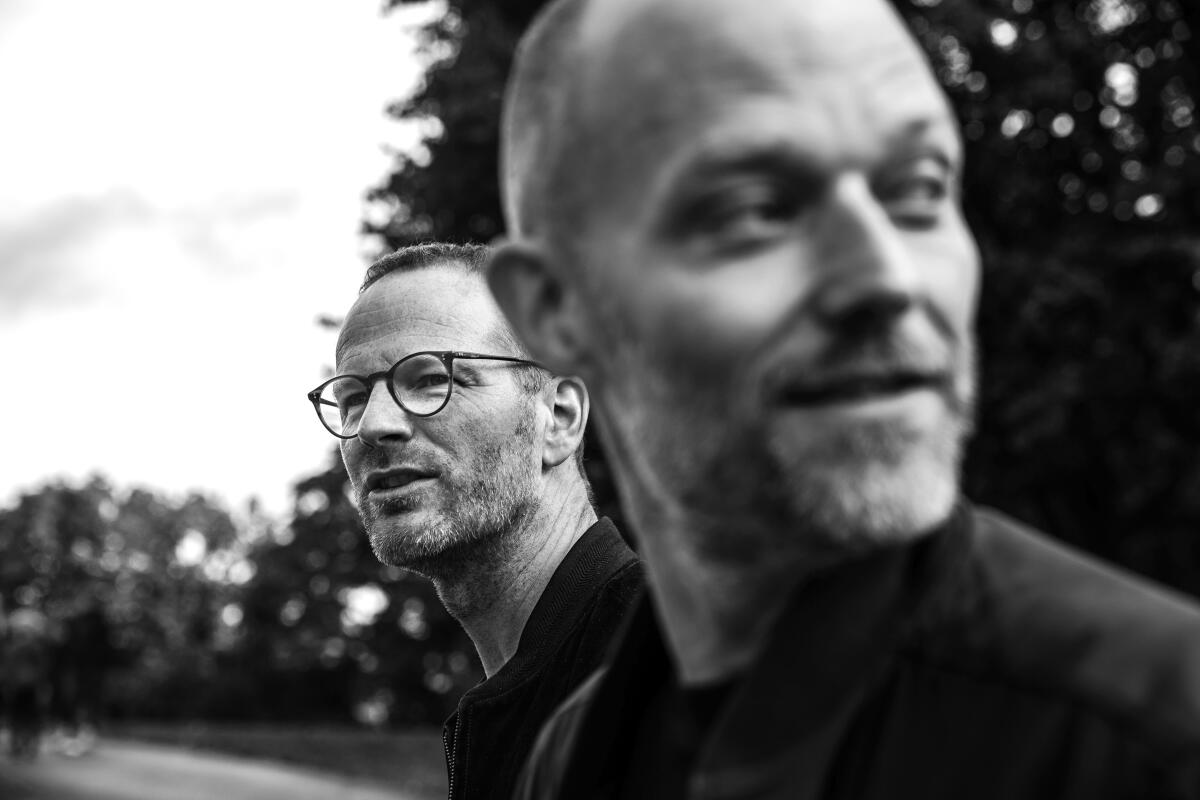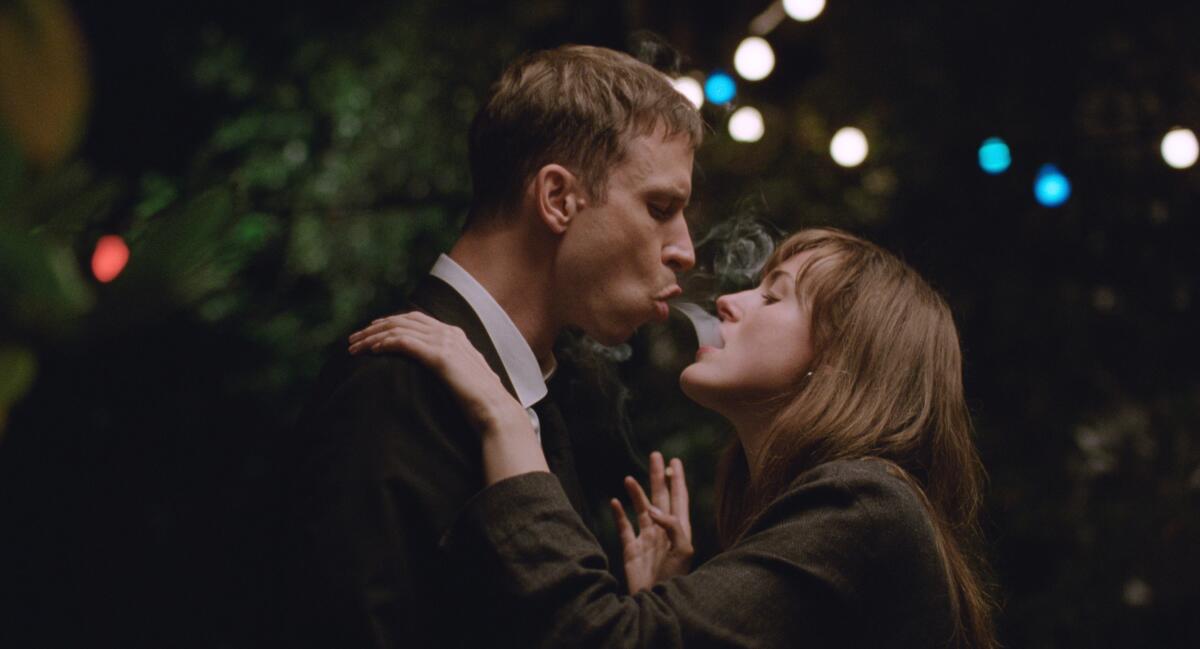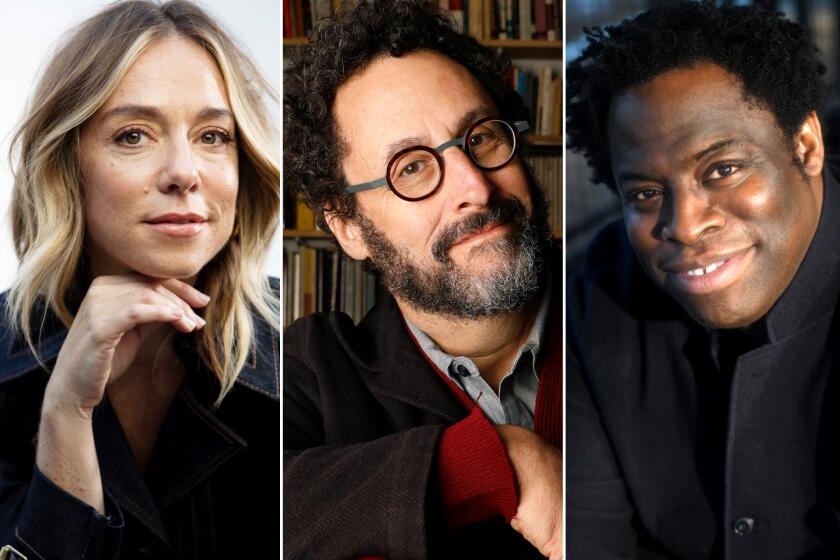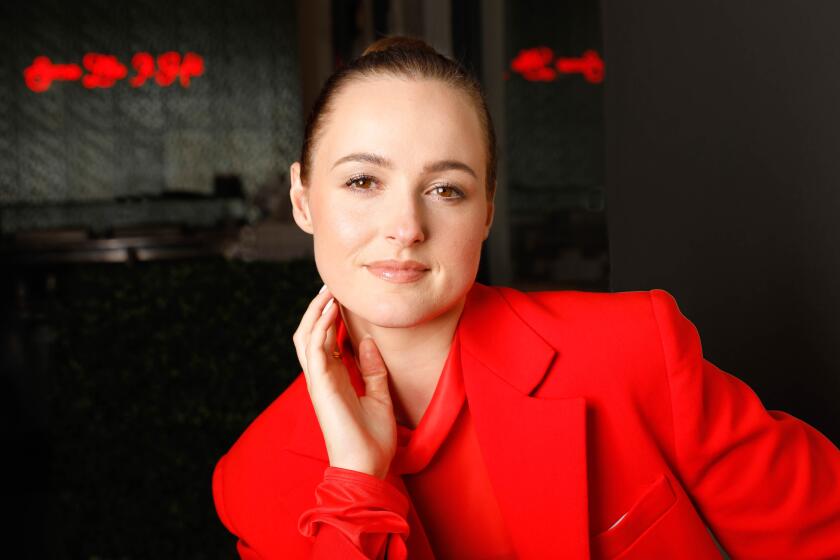How the bonds of friendship grew into ‘The Worst Person in the World’

- Share via
Being friends as well as writing partners, we never really managed to find a traditional method of working. We sometimes feel like the worst writers in the world, envying other much more prolific writers who seem to have it all figured out.
So getting nominated for an Oscar for original screenplay feels unreal … like some sort of dream.
We grew up in Norway, a country best described as a boring suburb on the outskirts of Europe. Being that far removed from Hollywood, the Oscars was never a part of our plans, not even our dreams.
We became best friends in our teens, bonding through our mutual love of films. At the time, we were also incorrigible film snobs; we wanted our films edgy, independent and preferably subtitled. You might even call them “anti-Hollywood.”
In their own words: Tony Kushner, Rebecca Hall, Jeymes Samuel and other screenwriters take us on a journey through writing their film scripts.
We tried cramming all our wild ambitions into our first feature, “Reprise.” Then the shocking news came: Robert McKee, the top script guru of Hollywood storytelling, liked our film. We panicked. Didn’t he see how convoluted the story was? Hell, wasn’t he supposed to hate voice-over? Yet we had to reluctantly admit to each other that, despite our anti-establishment leanings, we were very flattered.
Making “Reprise” — a story about friendship — had taught us that we loved our characters too much to be the cold formalists we once aspired to be. And McKee could maybe sense that American cinema is in our DNA. Years before we met and became film snobs, we both had caught “Back to the Future” three times in Norwegian cinemas (It made Joachim pick up skating!) and worn-out VHS tapes of Mel Brooks comedies and John Hughes films. (“The Breakfast Club” was our gateway drug to Ingmar Bergman.)
“The Worst Person in the World” is the fifth feature we’ve written together, and we felt the need to go back to the freedom and joy we felt writing our first.
Of course, we were older now than when we wrote “Reprise.” Our experiences of love and loss — could we use them to write a romantic comedy that felt specific and true? Wouldn’t it be liberating to explore a female perspective on our themes and obsessions?

We had learned a lot about the craft of screenwriting since we started out, but despite better knowledge, we still talk too much. Our cramped office is as much a therapy room as anything else, talking about our lives, our past loves, our friends and what they were going through. We still postpone focusing on the plot, getting lost in details and character moments. But we’ve come to accept it. And what really stays with us from our favorite films? Most often it is a character, a scene, a feeling … but the plot? Very rarely. Plot is essential because it structures everything else, but it is not the thing itself. It is the hanger and not the coat, if you will.
We love writing sequences that feel risky, hard to pull off. Like the scene where the main character, Julie, freezes time and runs towards her new love while the world stands still, breaking with the realism of the film that precedes it. Or the idea of writing the true-to-life messy breakup scene that we’ve never seen before on screen.
Norwegian filmmaker Joachim Trier and actor Renate Reinsve collaborated on a portrait of a young woman in transition in her life, struggling to discover who she really wants to be.
We’ve also come to love writing long dialogue scenes to explore character and behavior. But, of course, films should be visual. The words on the page aren’t sacred — a screenplay should inspire, and if something is added that feels real, it’s great. If a line written becomes superfluous — even better.
With “The Worst Person,” we wanted to make you feel almost like you’ve lived a lifetime in a couple of hours — like only movies can. We wanted to make it seem like there is no plot, like life has no plot, only moments. But, of course, life (and our plot, yes, we do have one) has a way of creeping up on you. Suddenly, it hits you: These fleeting moments, these relationships that failed, the things I thought were just distractions along the way, these were an essential part of my life. And now they’re gone.
We want our films to be like an honest and intimate conversation with your best friend. Maybe because that is how it all starts for us: two friends opening up to one another and tolerating each other. That way you dare to write a movie where fart jokes and deep existential conversations go hand in hand.
It is a small miracle that you can write something specific and personal about your life, your city, your innermost thoughts and intimate experiences, and find that it resonates with people all over the world. You might even find yourself nominated for an Oscar.
More to Read
From the Oscars to the Emmys.
Get the Envelope newsletter for exclusive awards season coverage, behind-the-scenes stories from the Envelope podcast and columnist Glenn Whipp’s must-read analysis.
You may occasionally receive promotional content from the Los Angeles Times.












